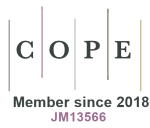Nurse’s perception of Moral Distress in end of life care in dialysis
DOI:
https://doi.org/10.33393/gcnd.2022.2357Keywords:
Dialysis, Emotional integrity, End of life, Moral distressAbstract
The phenomenon of Moral Distress in nursing practice is described as a situation of suffering that arises when the nurse recognizes the ethically appropriate action to be taken and yet institutional impediments make it impossible for him to follow the right course of action. Dialysis patients often have a complex disease trajectory that sometimes involves professional and emotional challenges for staff, especially at the end of life. The objective of this review is to identify which strategies are useful for preserving emotional integrity and awareness in operational settings, for the benefit of both operators and patients.
References
- Austin W. Moral distress and the contemporary plight of health professionals. HEC Forum. 2012;24(1):27–38.6-8. https://doi.org/10.1007/s10730-012-9179-8 DOI: https://doi.org/10.1007/s10730-012-9179-8
- Suleiman-Martos N, Gomez-Urquiza JL, Aguayo-Estremera R, Cañadas-De La Fuente GA, De La Fuente-Solana EI, Albendín-García L. The effect of mindfulness training on burnout syndrome in nursing: A systematic review and meta-analysis. J Adv Nurs. 2020;76(5):1124-1140. https://doi.org/10.1111/jan.14318 PMID:32026484 DOI: https://doi.org/10.1111/jan.14318
- Ling K, Xianxiu W, Xiaowei Z. Analysis of nurses’ job burnout and coping strategies in hemodialysis centers. Medicine (Baltimore). 2020;99(17):e19951. https://doi.org/10.1097/MD.0000000000019951 PMID:32332677 DOI: https://doi.org/10.1097/MD.0000000000019951
- Lusignani M, Giannì ML, Re LG, Buffon ML. Moral distress among nurses in medical, surgical and intensive-care units. J Nurs Manag. 2017;25(6):477-485. https://doi.org/10.1111/jonm.12431PMID:27726233 DOI: https://doi.org/10.1111/jonm.12431
- Jameton A. Nursing practice: the ethical issues. Englewood Cliffs, NJ: Prentice Hall; 1984.
- McCarthy J, Deady R. Moral distress reconsidered. Nurs Ethics. 2008;15(2):254-262. https://doi.org/10.1177/0969733007086023 PMID:18272615 DOI: https://doi.org/10.1177/0969733007086023
- Pauly BM, Varcoe C, Storch J. Framing the issues: moral distress in health care. HEC Forum. 2012;24(1):1-11. https://doi.org/10.1007/s10730-012-9176-y PMID:22446885 DOI: https://doi.org/10.1007/s10730-012-9176-y
- Kleinknecht-Dolf M, Frei IA, Spichiger E, Müller M, Martin JS, Spirig R. Moral distress in nurses at an acute care hospital in Switzerland: results of a pilot study. Nurs Ethics. 2015;22(1):77-90. https://doi.org/10.1177/0969733014534875 PMID:24917266 DOI: https://doi.org/10.1177/0969733014534875
- Villa G, Pennestrì F, Rosa D, et al. Moral distress in community and hospital settings for the care of elderly people. A grounded theory qualitative study. Healthcare (Basel). 2021;9(10):1307. https://doi.org/10.3390/healthcare9101307 PMID:34682986 DOI: https://doi.org/10.3390/healthcare9101307
- Giannetta N, Villa G, Pennestrì F, Sala R, Mordacci R, Manara DF. Ethical problems and moral distress in primary care: A scoping review. Int J Environ Res Public Health. 2021;18(14):7565. https://doi.org/10.3390/ijerph18147565 PMID:34300016 DOI: https://doi.org/10.3390/ijerph18147565
- De Brasi EL, Giannetta N, Ercolani S, et al. Nurses’ moral distress at the end of life care: a qualitative study. Nurs Ethics. 2021;28(5):614-627. https://doi.org/10.1177/0969733020964859 PMID:33267730 DOI: https://doi.org/10.1177/0969733020964859
- Rainer J, Schneider JK, Lorenz RA. Ethical dilemmas in nursing: an integrative review. J Clin Nurs. 2018;27(19-20):3446-3461. https://doi.org/10.1111/jocn.14542 PMID:29791762 DOI: https://doi.org/10.1111/jocn.14542
- Giannetta N, Villa G, Pennestrì F, Sala R, Mordacci R, Manara DF. Instruments to assess moral distress among healthcare workers: A systematic review of measurement properties. Int J Nurs Stud. 2020;111:103767. https://doi.org/10.1016/j.ijnurstu.2020.103767 PMID:32956930 DOI: https://doi.org/10.1016/j.ijnurstu.2020.103767
- McAndrew NS, Leske J, Schroeter K. Moral distress in critical care nursing: the state of the science. Nurs Ethics. 2018;25(5):552-570. https://doi.org/10.1177/0969733016664975PMID:27660185 DOI: https://doi.org/10.1177/0969733016664975
- Prentice TM, Gillam L, Davis PG, Janvier A. Always a burden? Healthcare providers’ perspectives on moral distress. Arch Dis Child Fetal Neonatal Ed. 2018;103(5):F441-F445. https://doi.org/10.1136/archdischild-2017-313539 PMID:28970316 DOI: https://doi.org/10.1136/archdischild-2017-313539
- Hlubocky FJ, Back AL, Shanafelt TD, et al. Occupational and Personal Consequences of the COVID-19 Pandemic on US Oncologist Burnout and Well-Being: A Study From the ASCO Clinician Well-Being Task Force. JCO Oncol Pract. 2021;17(7):e427-e438. https://doi.org/10.1200/OP.21.00147 PMID:34152789 DOI: https://doi.org/10.1200/OP.21.00147
- Axelsson L, Benzein E, Lindberg J, Persson C. Processes toward the end of life and dialysis withdrawal Physicians’ and nurses’ perspectives. Nurs Ethics. 2020;27(2):419-432. https://doi.org/10.1177/0969733019848050 PMID:31185802 DOI: https://doi.org/10.1177/0969733019848050
- Brioni E, Delli Zotti G, Apuzzo L, et al. [Self-efficacy and self-management in patients in hemodialysis: a narrative review of multidisciplinary theories]. G Ital Nefrol. 2021;38(3):2021-vol3. PMID:34169692
- Ducharlet K, Philip J, Gock H, et al. Moral Distress in Nephrology: Perceived Barriers to Ethical Clinical Care. Am J Kidney Dis. 2020;76(2):248-254. https://doi.org/10.1053/j.ajkd.2019.09.018 PMID:31866229 DOI: https://doi.org/10.1053/j.ajkd.2019.09.018
- Cohen LM, Germain MJ, Poppel DM. Practical considerations in dialysis withdrawal: “to have that option is a blessing”. JAMA. 2003;289(16):2113-2119. https://doi.org/10.1001/jama.289.16.2113 PMID:12709469 DOI: https://doi.org/10.1001/jama.289.16.2113
- Brown EA, Bargman J, van Biesen W et al. Length of Time on Peritoneal Dialysis and Encapsulating Peritoneal Sclerosis - Position Paper for ISPD: 2017 Update. Perit Dial Int 2017;37(4):362–374. https://doi.org/10.3747/pdi.2017.00018 PMID: 28676507 DOI: https://doi.org/10.3747/pdi.2017.00018
- Murtagh FE, Sheerin NS, Addington-Hall J, Higginson IJ. Trajectories of illness in stage 5 chronic kidney disease: a longitudinal study of patient symptoms and concerns in the last year of life. Clin J Am Soc Nephrol. 2011;6(7):1580-1590. https://doi.org/10.2215/CJN.09021010PMID:21685021 DOI: https://doi.org/10.2215/CJN.09021010
- Davison SN. The ethics of end-of-life care for patients with ESRD. Clin J Am Soc Nephrol. 2012;7(12):2049-2057. https://doi.org/10.2215/CJN.03900412 PMID:22997341 DOI: https://doi.org/10.2215/CJN.03900412
- Parliamentary Committee on Palliative and Compassionate Care. Not to Be Forgotten: Care of Vulnerable Canadians. 2011. Accessed September 2021. Online https://www.pallium.ca/wp-content/uploads/2019/07/Not-to-be-Forgotten-Care-of-Vulnerable-Canadians-2011.pdf
- Almutary H, Bonner A, Douglas C. Symptom burden in chronic kidney disease: a review of recent literature. J Ren Care. 2013;39(3):140-150. https://doi.org/10.1111/j.1755-6686.2013.12022.x PMID:23826803 DOI: https://doi.org/10.1111/j.1755-6686.2013.12022.x
- Axelsson L, Benzein E, Lindberg J, Persson C. End-of-life and palliative care of patients on maintenance hemodialysis treatment: a focus group study. BMC Palliat Care. 2019;18(1):89. https://doi.org/10.1186/s12904-019-0481-y PMID:31666038 DOI: https://doi.org/10.1186/s12904-019-0481-y
- Bristol AA, Chaudhry S, Assis D, et al. An Exploratory Qualitative Study of Patient and Caregiver Perspectives of Ambulatory Kidney Palliative Care. Am J Hosp Palliat Care. 2021;38(10):1242-1249. https://doi.org/10.1177/1049909120986121 PMID:33438435 DOI: https://doi.org/10.1177/1049909120986121
- Seccareccia D, Downar J. “Should I go on dialysis, Doc?”: initiating dialysis in elderly patients with end-stage renal disease. Can Fam Physician. 2012;58(12):1353-1356, e704-e707. PMID:23242893
- Gluyas H. Patient-centred care: improving healthcare outcomes. Nursing standard (Royal College of Nursing (Great Britain):1987). 2015;30(4):50–59. DOI: https://doi.org/10.7748/ns.30.4.50.e10186
- Verberne WR, van den Wittenboer ID, Voorend CGN, et al. Health-related quality of life and symptoms of conservative care versus dialysis in patients with end-stage kidney disease: a systematic review. Nephrol Dial Transplant. 2021;36(8):1418-1433. https://doi.org/10.1093/ndt/gfaa078 PMID:32535622 DOI: https://doi.org/10.1093/ndt/gfaa078
- Savitsky K, Keysar B, Epley N, Carter T, Swanson A. The closeness-communication bias: increased egocentrism among friends versus strangers. J Exp Soc Psychol. 2011;47(1):269-273. https://doi.org/10.1016/j.jesp.2010.09.005 DOI: https://doi.org/10.1016/j.jesp.2010.09.005
- Bruce SD, Allen D. Moral Distress: One Unit’s Recognition and Mitigation of This Problem. Clin J Oncol Nurs. 2020;24(1):16-18. https://doi.org/10.1188/20.CJON.16-18 PMID:31961832 DOI: https://doi.org/10.1188/20.CJON.16-18
- Manara DF, Villa G, Moranda D. In search of salience: phenomenological analysis of moral distress. Nurs Philos. 2014;15(3):171-182. https://doi.org/10.1111/nup.12048 PMID:24528533 DOI: https://doi.org/10.1111/nup.12048
- Gerchow L, Burka LR, Miner S, Squires A. Language barriers between nurses and patients: A scoping review. Patient Educ Couns. 2021;104(3):534-553. https://doi.org/10.1016/j.pec.2020.09.017 PMID:32994104 DOI: https://doi.org/10.1016/j.pec.2020.09.017
- Helmers A, Palmer KD, Greenberg RA. Moral distress: developing strategies from experience. Nurs Ethics. 2020;27(4):1147-1156. https://doi.org/10.1177/0969733020906593 PMID:32238031 DOI: https://doi.org/10.1177/0969733020906593
- Aasen EM, Kvangarsnes M, Heggen K. Nurses’ perceptions of patient participation in hemodialysis treatment. Nurs Ethics. 2012;19(3):419-430. https://doi.org/10.1177/0969733011429015 PMID:22323398 DOI: https://doi.org/10.1177/0969733011429015
- Kliger AS. Maintaining safety in the dialysis facility. Clin J Am Soc Nephrol. 2015;10(4):688-695. https://doi.org/10.2215/CJN.08960914 PMID:25376767 DOI: https://doi.org/10.2215/CJN.08960914











